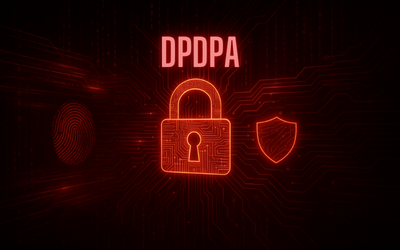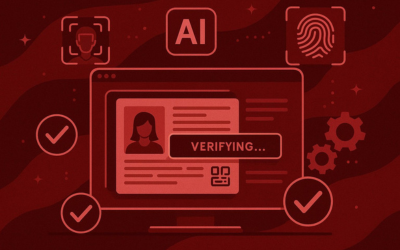KYC Update 2025: What Businesses Need to Know

The regulatory landscape is evolving rapidly, and the upcoming KYC Update 2025 brings critical changes that businesses must understand to remain compliant and competitive. Driven by advancements like video-based identity verification, biometric authentication, and the necessity for ongoing compliance, these updates are fundamentally reshaping how companies onboard customers, manage risk effectively, and cultivate trust in today's digital environment. This article delves into the latest changes within KYC Update 2025 regulations, explores the challenges companies are encountering, and highlights the modern technological solutions that are facilitating their adaptation.
This article covers the latest changes in KYC regulations, the challenges companies face, and the modern technological solutions helping them adapt.
Table of Contents
- KYC Regulatory Changes in 2025
- Why the 2025 KYC Update is Critical for Businesses
- Top 5 Challenges Businesses Face with Modern KYC
- Modern Solutions to Navigate KYC Compliance
- Industry Applications and Use Cases
- Conclusion
- Frequently Asked Questions (FAQ)
KYC Regulatory Changes in 2025
Several significant regulatory updates in 2025 are reshaping how organizations approach identity verification:
- Video KYC Expansion – Video-based identity verification is now widely accepted by regulators as a standard for remote onboarding.
- Mandatory Biometric Authentication – High-risk customers must undergo identity checks using biometrics like facial recognition or fingerprints.
- Interoperable KYC Profiles – Financial institutions are encouraged to securely share verified KYC data to avoid redundant checks.
- Ongoing KYC (OKYC) – Periodic re-verification of customer identity is now mandatory to ensure accuracy over time.
- Strengthened Data Privacy Laws – Updates such as India’s DPDPA and alignment with GDPR require stricter data handling and processing protocols.
Why the 2025 KYC Update is Critical for Businesses
These regulatory updates go beyond compliance—they reshape customer experience, operational efficiency, and risk management:
- Compliance Risk – Non-compliance can lead to fines, legal complications, and reputational damage.
- Fraud Reduction – Enhanced verification lowers risks of synthetic identity fraud and financial crimes.
- Customer Expectations – Users expect secure and frictionless digital experiences from the first interaction.
- Operational Gains – Automation and digital workflows reduce manual processes and improve efficiency.
- Global Compliance – As businesses scale internationally, they must align with AML (Anti-Money Laundering) and KYC requirements worldwide.
Related: What is Fraud Detection: The Importance & Why is it needed
Top 5 Challenges Businesses Face with Modern KYC
Despite the benefits, modern KYC comes with its own set of hurdles:
- High Cost of Infrastructure – Implementing biometric and video verification solutions can be expensive.
- Persistence of Manual Processes – Legacy systems slow down onboarding and increase human error.
- Fragmented User Journeys – Disconnected identity verification steps frustrate users and increase drop-offs.
- Constant Regulatory Change – Frequent legal updates require agile and adaptable compliance workflows.
- Scalability Issues – Rapid growth or onboarding spikes can overwhelm teams reliant on manual checks.
Modern Solutions to Navigate KYC Compliance
To manage these challenges, companies are turning to technology-driven KYC solutions:
- AI-Based Document Verification – OCR extracts and authenticates ID data instantly.
- Biometric & Video-Based Workflows – Tools like liveness detection and facial recognition support secure remote onboarding.
- Scheduled Re-Verification – Automated triggers for periodic identity checks help maintain compliance.
- Data Security & Privacy Compliance – Encryption and anonymization keep personal data secure and legally compliant.
- Developer-Friendly APIs – Ready-to-integrate tools simplify deployment, even for startups or non-technical teams.
Related: AI-Powered OCR for Fast Digital Verification
SprintVerify is one such advanced platform offering a unified suite of verification tools—video KYC, biometrics, AI document validation, and ongoing compliance monitoring. Its no-code and API-friendly approach makes it easy for businesses of all sizes to integrate robust KYC workflows.
Related: SprintVerify: Easy Identity Verification
Industry Applications and Use Cases
KYC is no longer limited to banking—it’s essential across various industries:
- Fintech & Banking – Enables digital lending, instant account opening, and fraud-resistant onboarding.
- E-commerce & Marketplaces – Ensures verified buyer/seller interactions and risk scoring.
- Insurance – Facilitates pre-policy checks and secure claims processing.
- Logistics & Transportation – Verifies vendors and drivers to build operational trust.
- Education & HR Tech – Supports background checks for students, staff, and job applicants.
Platforms like SprintVerify help these industries with customizable, automated verification workflows tailored to specific sector needs.
Related: CANDY: Business Identity Verification
Conclusion
The 2025 KYC update marks a turning point in digital compliance and customer verification. Regulatory bodies are mandating smarter, more secure identity processes—pushing businesses to embrace automation, biometrics, and ongoing monitoring.
By adopting these modern tools and strategies, companies can reduce fraud, enhance user experience, and stay ahead of evolving regulations. Whether local or global, future-ready KYC solutions are essential to building a trusted digital enterprise.
Frequently Asked Questions (FAQ)
1. What’s new in KYC regulations for 2025?
Biometric and video verification are now central to digital identity processes. Ongoing KYC and cross-platform interoperability are also key highlights.
2. Are these updates mandatory for all industries?
They’re primarily enforced in regulated sectors like BFSI and insurance, but many digital businesses are adopting them as best practices.
3. How does biometric verification enhance security?
It reduces the risk of identity theft by using hard-to-forge identifiers like facial patterns and fingerprints.
4. What is ongoing KYC (OKYC)?
OKYC refers to periodic re-verification of customer identities based on risk profiles, often annually or during key account changes.
5. Can modern KYC tools integrate with legacy systems?
Yes. Many platforms, including SprintVerify, offer RESTful APIs and no-code integration options for quick implementation.






